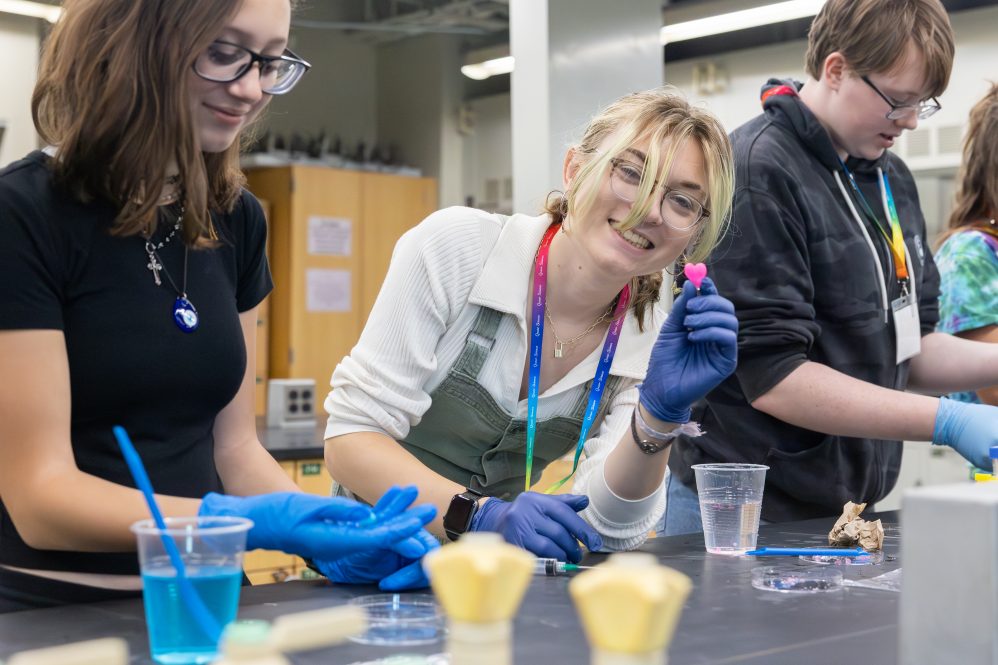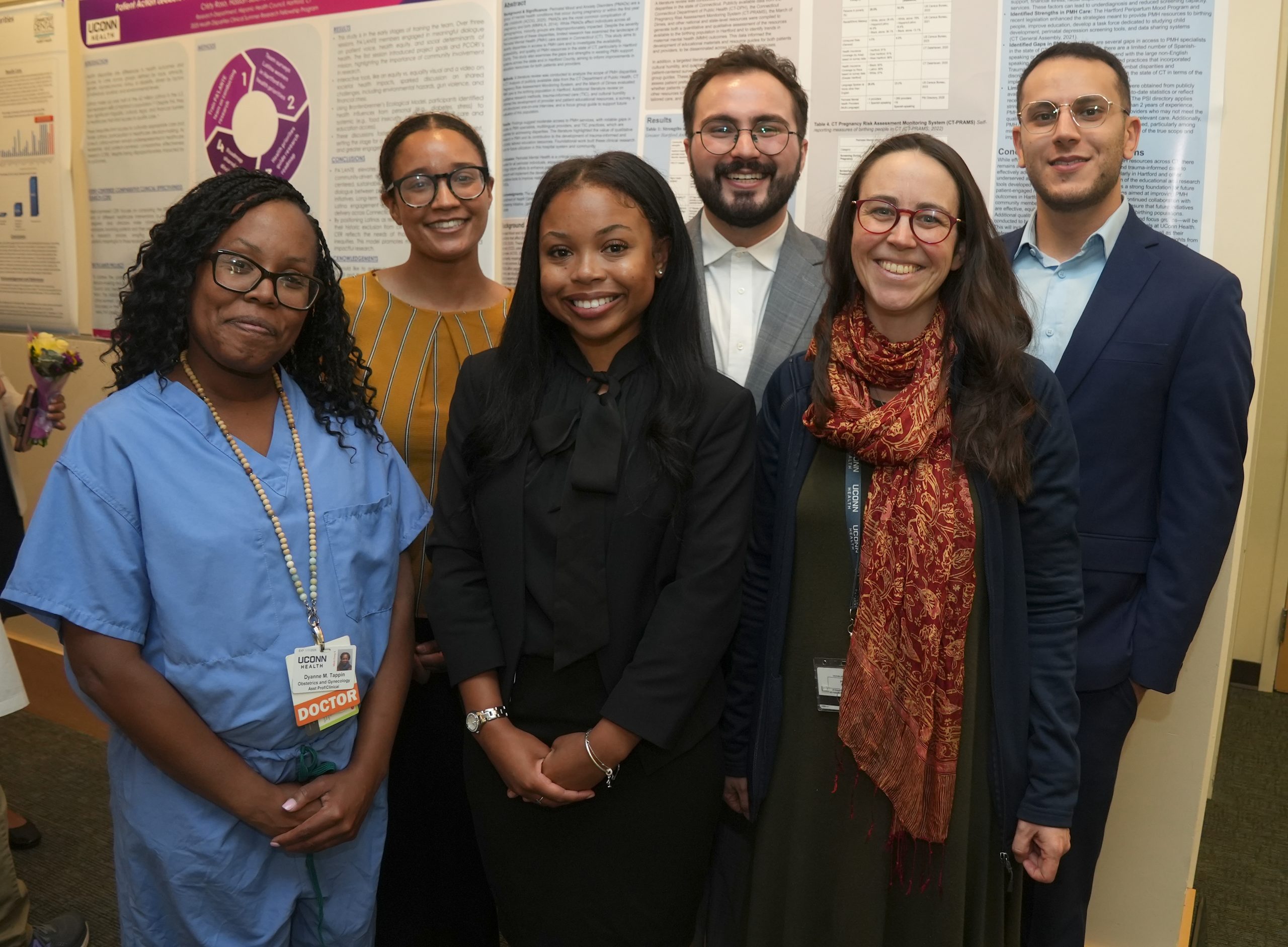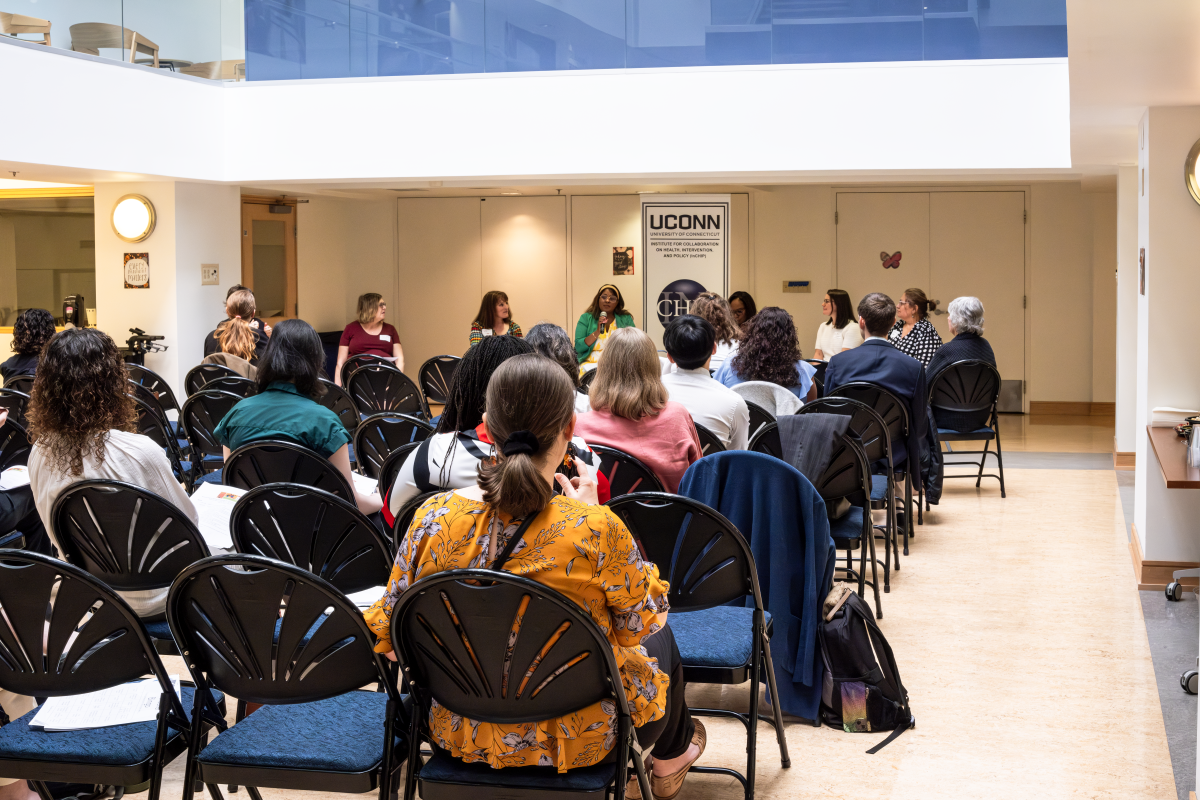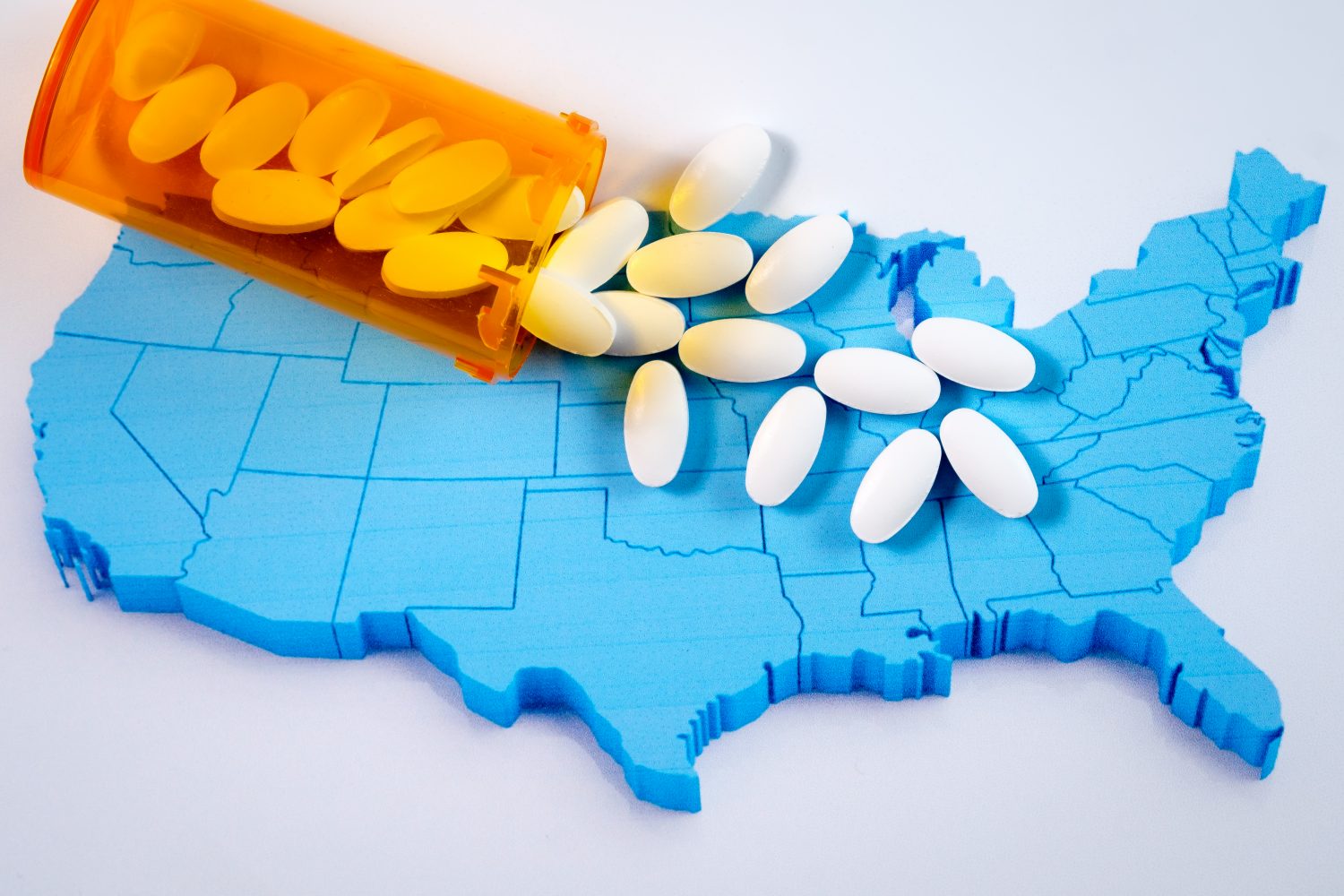In celebration of Pride Month and launched with the goal of connecting LGBTQIA+ youth with role models in various STEM fields, UConn’s Second Annual Queer Science Conference was held on Sunday, June 4, at the Storrs Campus.
The one-day, volunteer-driven event – entirely free for participants – connected high school students with LGBTQIA+ faculty, staff, and graduate and undergraduate students at UConn who work in STEM disciplines, offering community and mentorship as well as state-of-the-art laboratory experiences and opportunities for hands-on science demonstrations.
The program is supported by the UConn School of Engineering’s Vergnano Institute for Inclusion; the nonprofit organization Out in Science, Technology, Engineering, and Mathematics, or oSTEM; and UConn’s Rainbow Center. (JS)
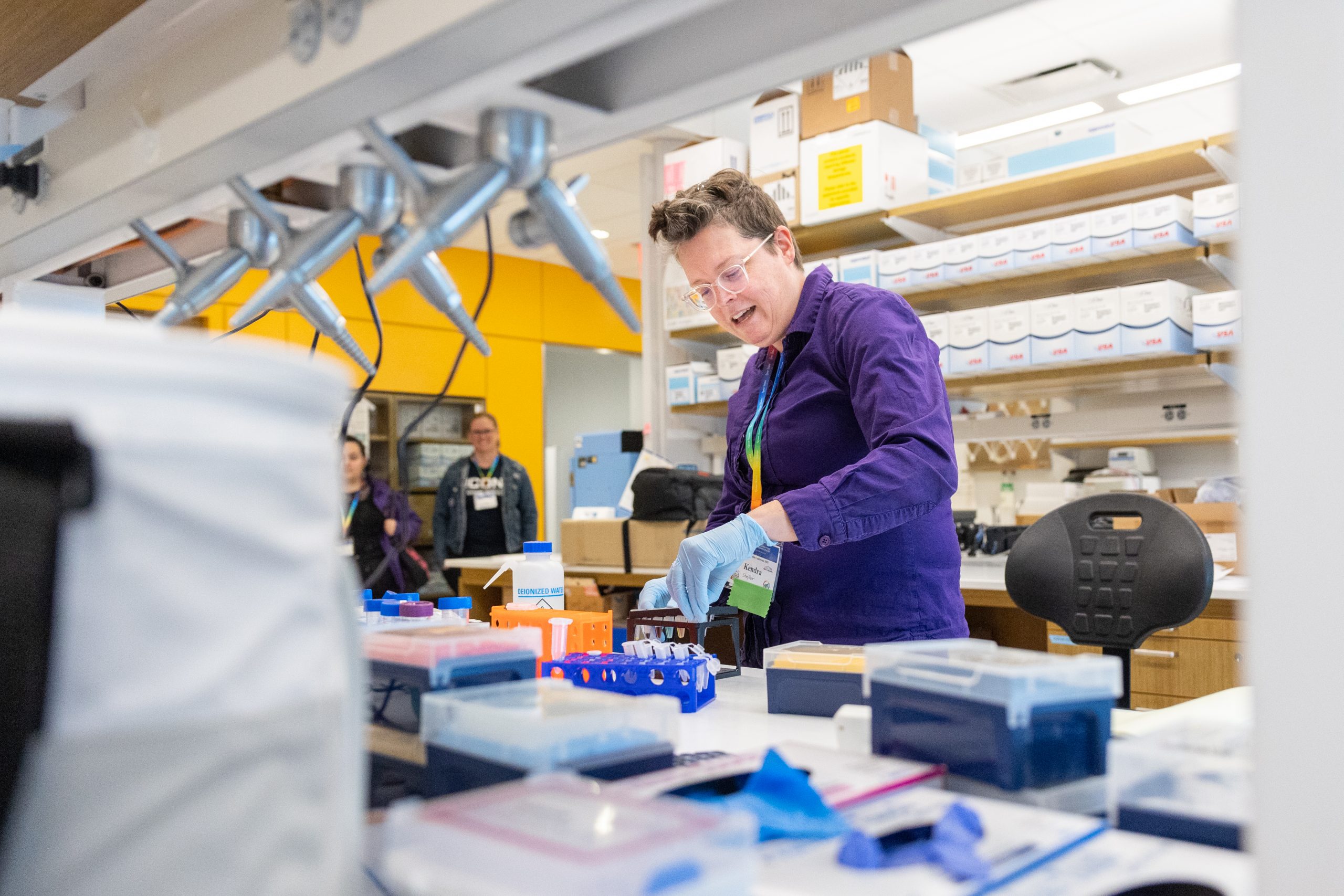
Kendra Maas, facility scientist of the Microbial Analysis, Resources and Services (MARS) laboratory and one of the Queer Science Conference’s organizers, demonstrates a DNA sequencing technique as she chats with a group of students in the MARS lab during the conference’s morning tours around campus. Maas shared her story of her upbringing, college experience, and career journey as a queer scientist and encouraged the students to ask for advice and help as they begin theirs.
Volunteer Anna Marie LaChance ’17 (ENG) ’20 GCCI ’22 Ph.D. said the ultimate goal of the conference is to connect students and scientists in the LGBTQIA+ community who can serve as friends and mentors in life and career.
“It’s hard when you’re younger and you can’t envision yourself as a scientist or an engineer,” LaChance says. “You have to see it in order to be it.” (SH)
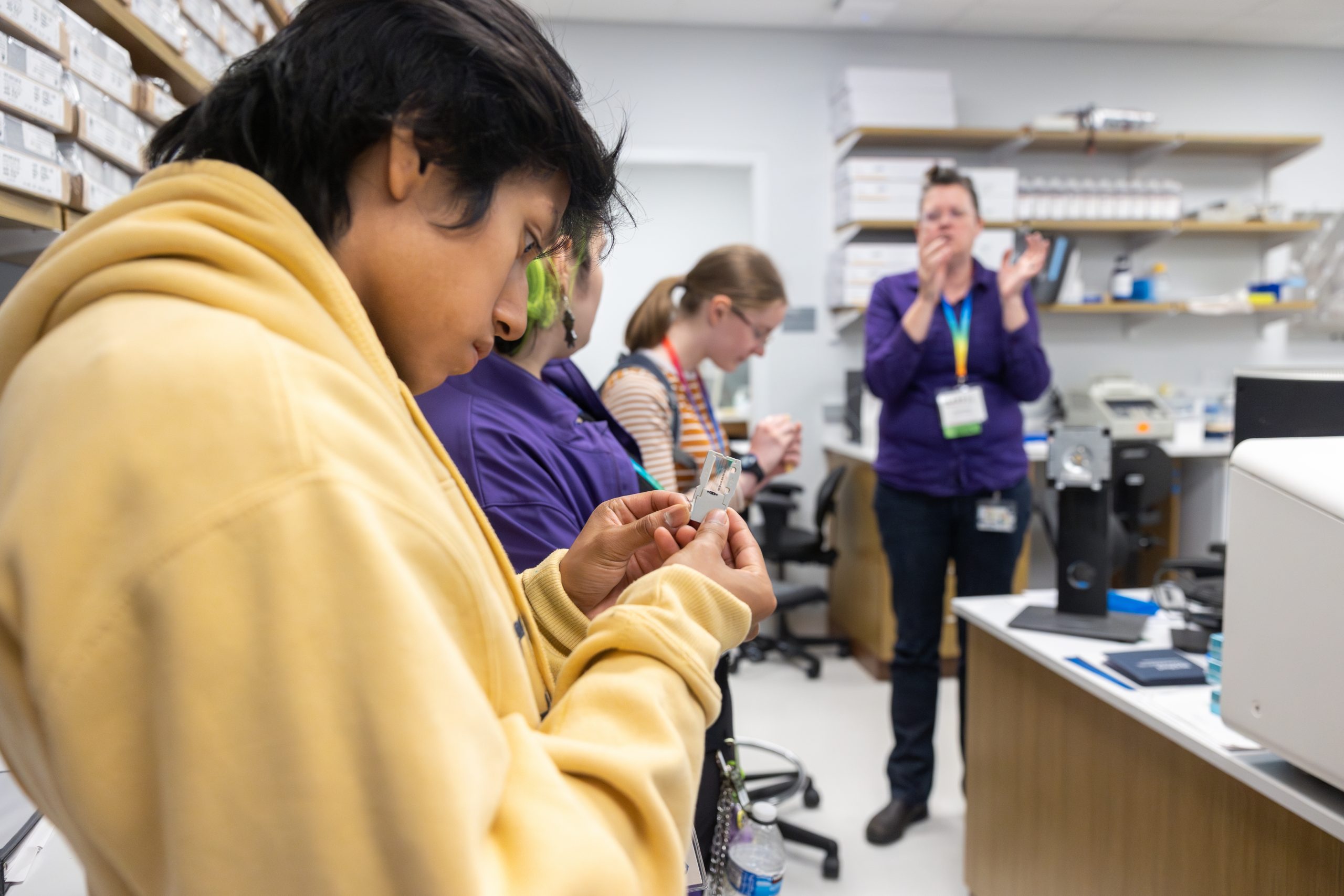
Conard High School student Jojo Painter holds a part for one of the imaging systems in MARS’ sequencing lab as Maas walks their group through the MARS lab. Maas told the students that much has changed since she was their age, from advancements in technology that allow current high school-aged students to conduct experiments that were once “super rare” to the experiences and embracement of first-generation college students such as herself. (SH)
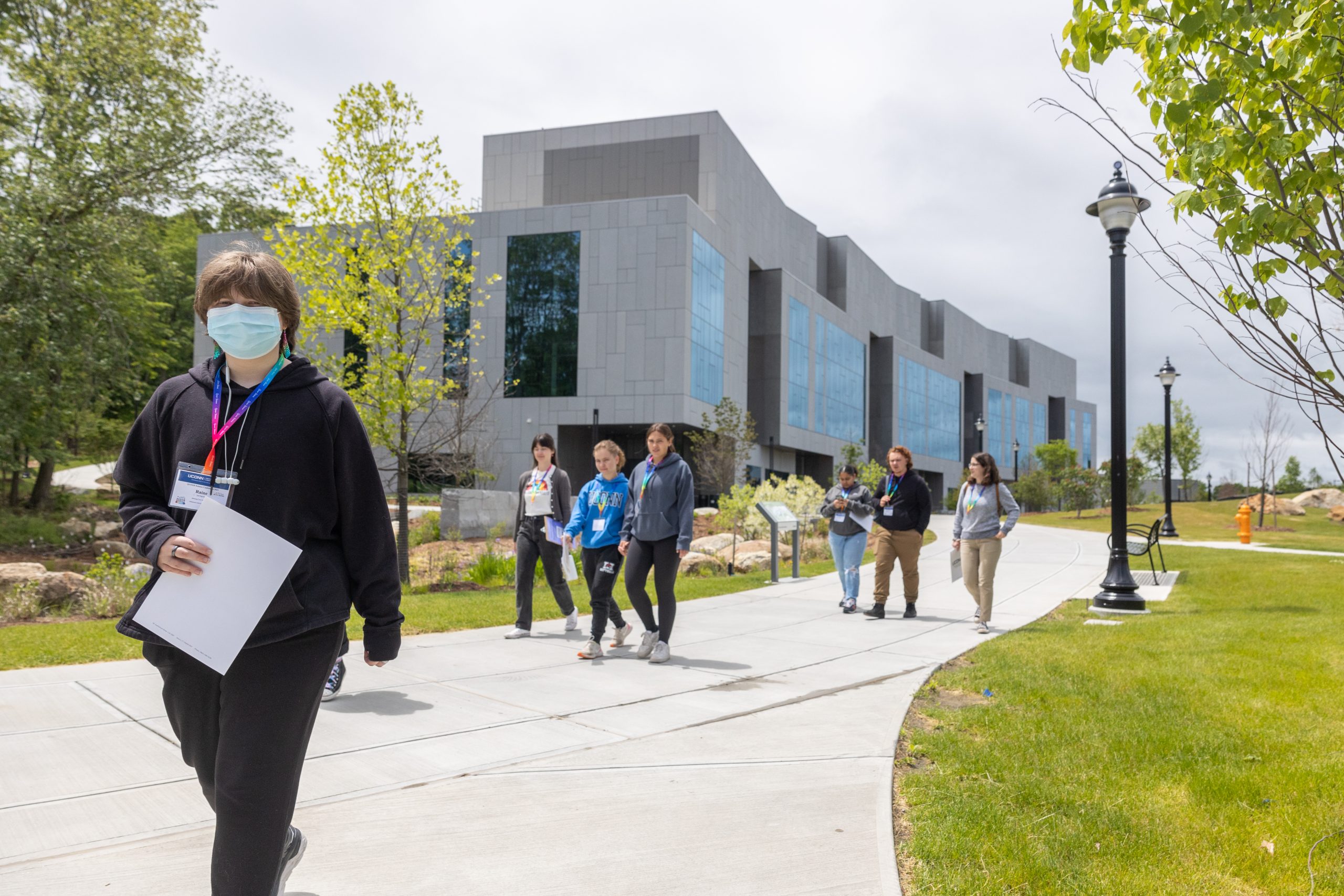
In addition to the MARS lab, Queer Science Conference attendees also got to tour lab spaces in the newly built Science I building. Several students at this year’s conference were repeat attendees from last year’s event, so volunteer Anika Agrawal said the organizers switched up the tour locations and demonstration topics so the students who previously attended had new things to see and do during the conference. (SH)
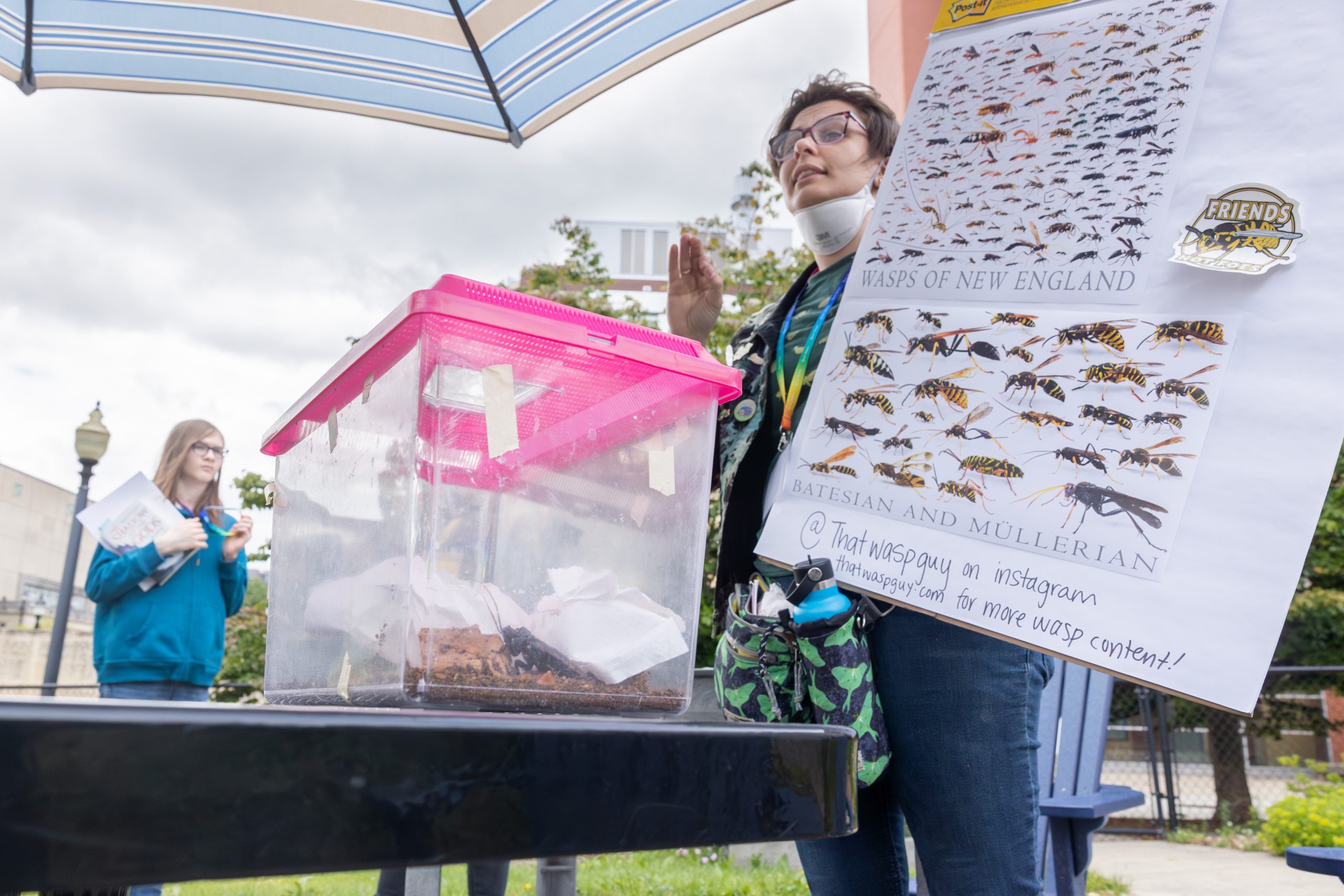
Abigail Hayes, an entomologist and ecology & evolutionary biology post-doctoral researcher, was among the volunteers who led a tour group in the morning and a demonstration in the afternoon, sharing facts on all things bugs with the help from a couple of their cockroaches. (SH)
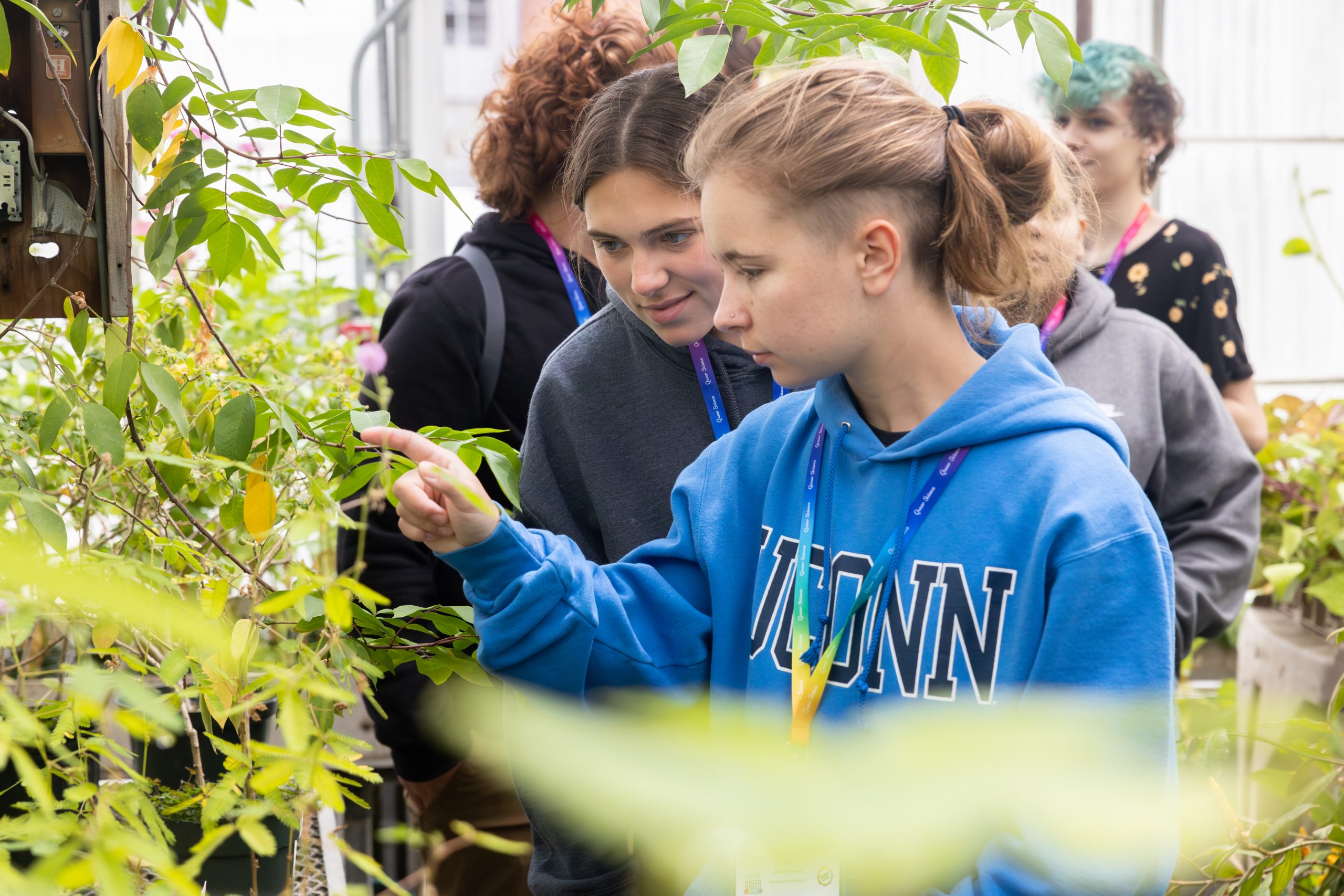
Hayes also led students through the EEB Biodiversity Education and Research greenhouses and pointed out various species of plants, including a sensitive plant that Brynn Mesick of Manchester High School, front, and Ava Harriman of Haddam-Killingworth High School took notice of. Agrawal said the volunteers from a variety of STEM disciplines helped make the second year of the conference a success.
“If students see that they have role models in stuff they’re interested in, that’ll help them go on in life,” Agrawal says. (SH)
